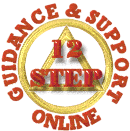Aiming for the Ideal
A Component of my Fourth Step that drove Positive Improvement
When I did my fourth step the second time, part of it was planning to capitalize on it as a product for self-improvement, vision, and goal setting rather than using it simply as a scripted list for confession.
I did this by using two exercises I learned outside of the recovery world, and it was based on the moral inventory I created in the fourth step. It only took 30 minutes to get started on part one of a continuous development of strength and resiliency. Part two was even quicker.
For part one, for the first 15 minutes, I wrote a list of things that would be the components of a utopia for me: my heaven on Earth. It listed what my home would look like, what my relationship with my wife would be, what life with my friends would look like, and how I would spend my days filled with purpose and responsibility. That part was easy and encouraging. It was a life in the sun, with great relationships, and infused with meaning.
The next 15 minutes were much harder. This was a dystopia for me: how I saw hell on Earth. It was a cold place, homeless, helpless, with no job, no friends, poor health, and hopeless addiction, all with nothing but pain and regret.
The benefit of composing these two opposite writings was I now had two clear visions as beacons to reference for the future navigation of my life. I could see a place in the future for my life to aim toward, as well as a place to aim away from. From there, I had to make periodic choices that steered my future to where I want to be and away from where I didn’t want to be.
For part two, I continued with another therapy technique. It was using what is called the “Miracle Question.” It was much like the first 15 minute drill that concentrated on the ideal world, but it was focused on internal changes in me rather than with external. The miracle question doesn’t create a miracle, but it uses the concept of granting a miracle to drive one’s thought process.
The question that drives the thought exercise asks ‘if you could have a miracle occur overnight that improved you significantly, how would your life be different tomorrow?’ Specifically, consider many dimensions of your life. How will you see yourself? What will be easier? How will you feel? How will you behave? What will other people notice about you?
What I love about this is that it also focuses on improvement. It clearly identifies what I want to be. The results were quick. Within minutes, I was picturing a happy version of myself in a better world which was encouraging. The next day I woke up more positive than negative, and that felt empowering.
Curiously in these two efforts, when I wrote both my utopia (heaven) portion and answered the miracle question, neither of the scenarios ended up with a drink in my hand at any point. The dystopia (hell) writing did. Honestly, I probably could come up with an ideal world where I was drinking if I thought about it for a while, but that is not what happened. My first instinct saw an ideal world without it. The results were similar with the answers to the miracle question.
A significant aspect of these two exercises is they do not worry about how to get to that ideal world. That’s a good thing because how each of us will get to a better life will be different. It gives a destination but not a path. With our goals of better lives in mind, we can search for real and purposeful ways to meet them in our own way. Without that destination, we would wander aimlessly.
The other special part about this is it was tangible and practical. I could see it clearly, and it was doable, almost as if it was common sense. Despite being created by fantasy, it was not a fantasy world. It didn’t take long for this to take hold in my life and create changes.
It’s my recommendation that if you want to try this for yourself, do it in writing. Writing it helped me think about it, and it made it easy to later go back and reference earlier thoughts. It’s cool to go back and see where you were in the past. It provided me validation that my efforts created progress when I compare myself now to where I was.
So that’s it. My life did not become ideal nor perfect through these efforts, but it did improve mentally, and it quickly changed some of my behaviors for the good. Since, I continue towards future milestones of betterment, focusing on success and leaving the failures and sins of my past behind.
This effort had an easy start, only taking an initial investment of 30 minutes. It had an immediate positive effect on me. It’s worth pointing out that each of these efforts could help on their own, but it seemed natural to do them both in order. Since then, it has been a never ending, unbounded journey towards improvement and achievement using these exercises that provide real results.
by Chuck S.
* The utopia/dystopia exercise can be found at www.selfauthoring.com It was developed and published by Dr. Jordan Peterson
** “Miracle Question” info is available in multiple places with a web search for “psychology miracle question.” It was created by Steve de Shazar

